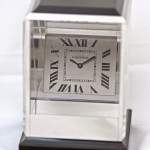J.P. Morgan Jr.’s Watches Emerge, Including First-Ever Cartier Mystery Clock
And a Frodsham "Morgan caliper" watch.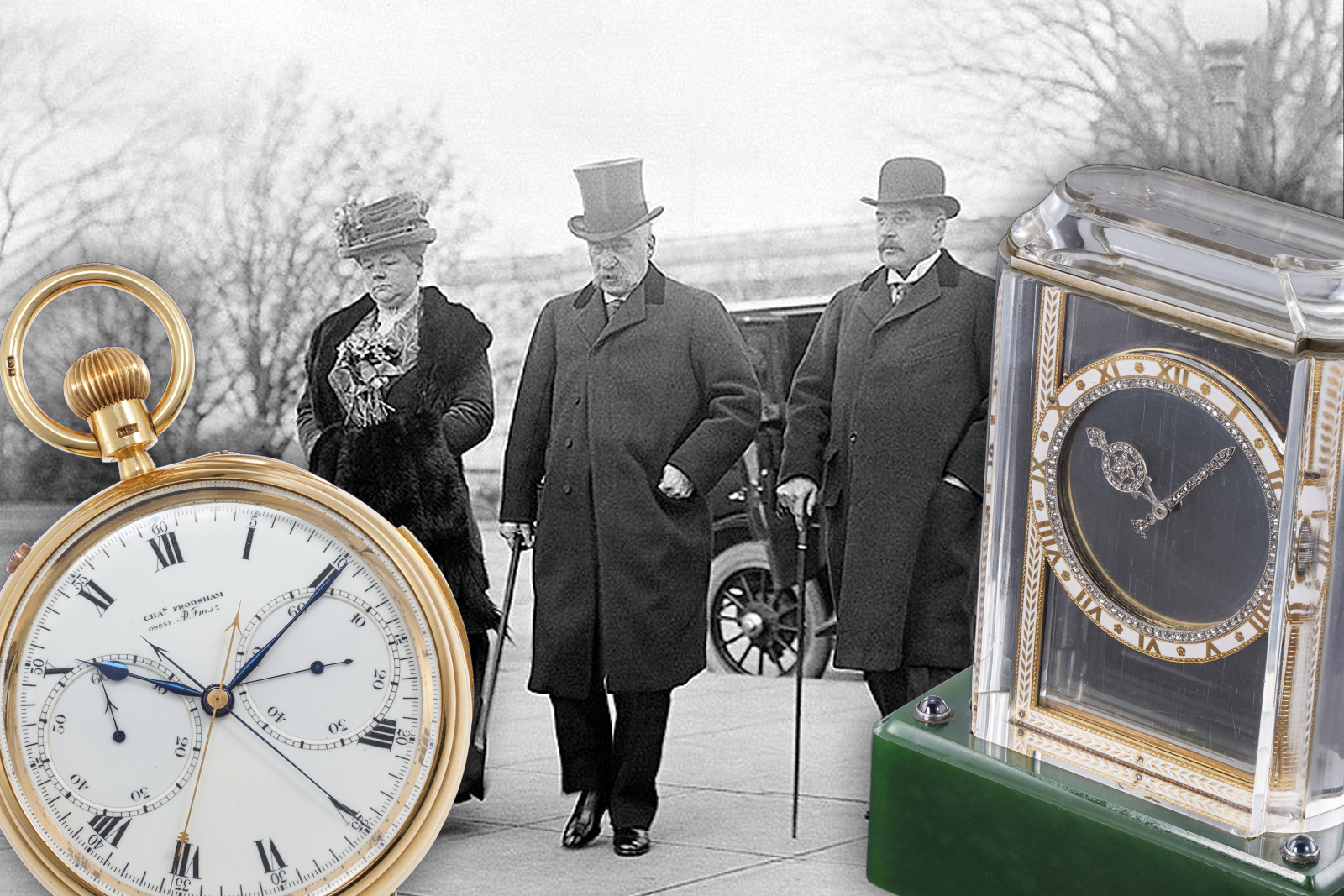
Philips’ upcoming sale in Geneva from November 8-9 includes two timepieces owned by John Pierpont Morgan Jr., widely known as Jack Morgan. Heir to a financial empire, Morgan was the first chairman of what is now JPMorganChase, and more pertinently, inherited the sensibilities of his father, J. Pierpont Morgan Sr., in collecting and gifting.
Morgan Sr. was a collector on a grand scale, and across categories. The catalogues of his collections spanned volumes – two books for Chinese porcelain, four for miniatures, and a single volume for his watches and clocks, albeit a 350-page tome that weighed almost 6 kg in its original edition. The penchant for collecting was passed on to Jack Morgan, who evidently had sharp tastes in watches and clocks. The two timepieces going on the block at Phillips illustrate that.
One is the first-ever Cartier mystery clock, a Model A sold to Morgan in 1913. And the other is one example of the “Morgan caliper”, a series of minute repeating, split-second chronograph, tourbillon pocket watches made for J.P. Morgan & Co., which were gifted by Morgan Sr. and Jack Morgan to the firm’s partners and important associates.
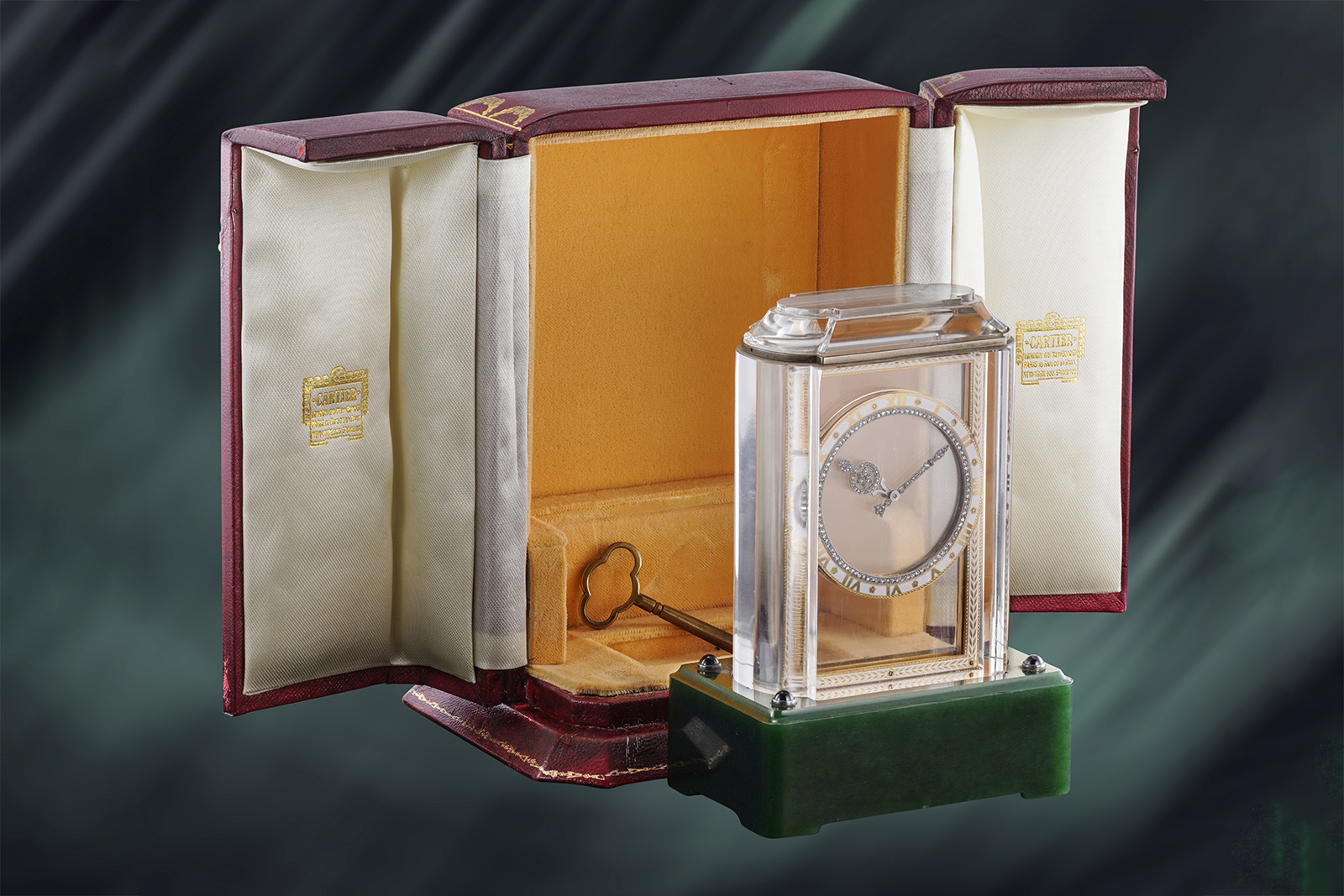
Titans of finance
In 1913, Louisiana senator Arsène Pujo formed the Pujo Committee to investigate the growing concentration of financial power in the United States. The committee found that an inner circle of partners at J.P. Morgan & Co. and its two largest proxies held 341 directorship positions across the boards of 34 major banks, 30 leading insurance firms, 32 transportation companies, 24 manufacturing concerns, and 12 national utility providers. This network controlled about US$22.245 billion, equal to about half of the country’s gross domestic product at the time, with most of it centred on the firm run by Morgan Sr. and his son.
Morgan Sr. also accumulated some 20,000 valuable objects, including about 90 watches from the collection of German antiquities dealer Carl Heinrich Marfels, purchased for US$360,000 in 1910 as reported by The New York Times, and some more from the estate of English banker George Hilton Price.
Most of these were already antiques even in Morgan Sr.’s lifetime a hundred years ago – giving new meaning to antiquarian horology – and are of little interest to most 21st century collectors, though Morgan Sr. also bought many contemporary watches from leading English watchmakers for himself and as gifts. With Morgan Sr.’s death in 1913, his son inherited the firm and collections.
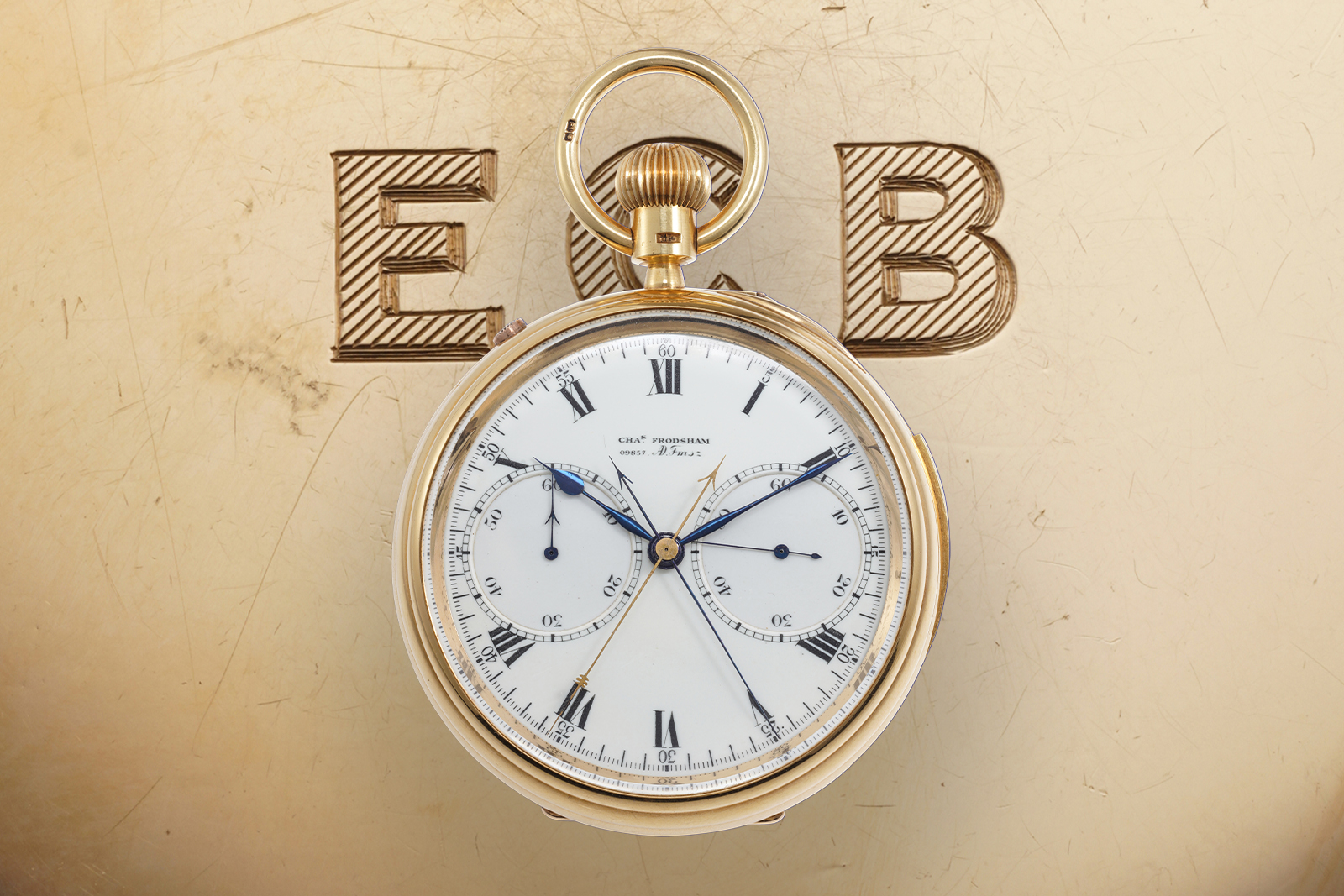
Lot 134 – The First Cartier “Model A” Mystery Clock
This Cartier “Model A” mystery clock was Jack Morgan’s gift to himself. The Model A was Cartier’s first mystery clock – and this, the first Model A.
A 1989 letter from Eric Nussbaum, then Cartier’s in-house historian, confirms “that the A-model mistery-clock [sic] figures in our archives as the first one, sold to J.P. Morgan Jr. in 1913”.
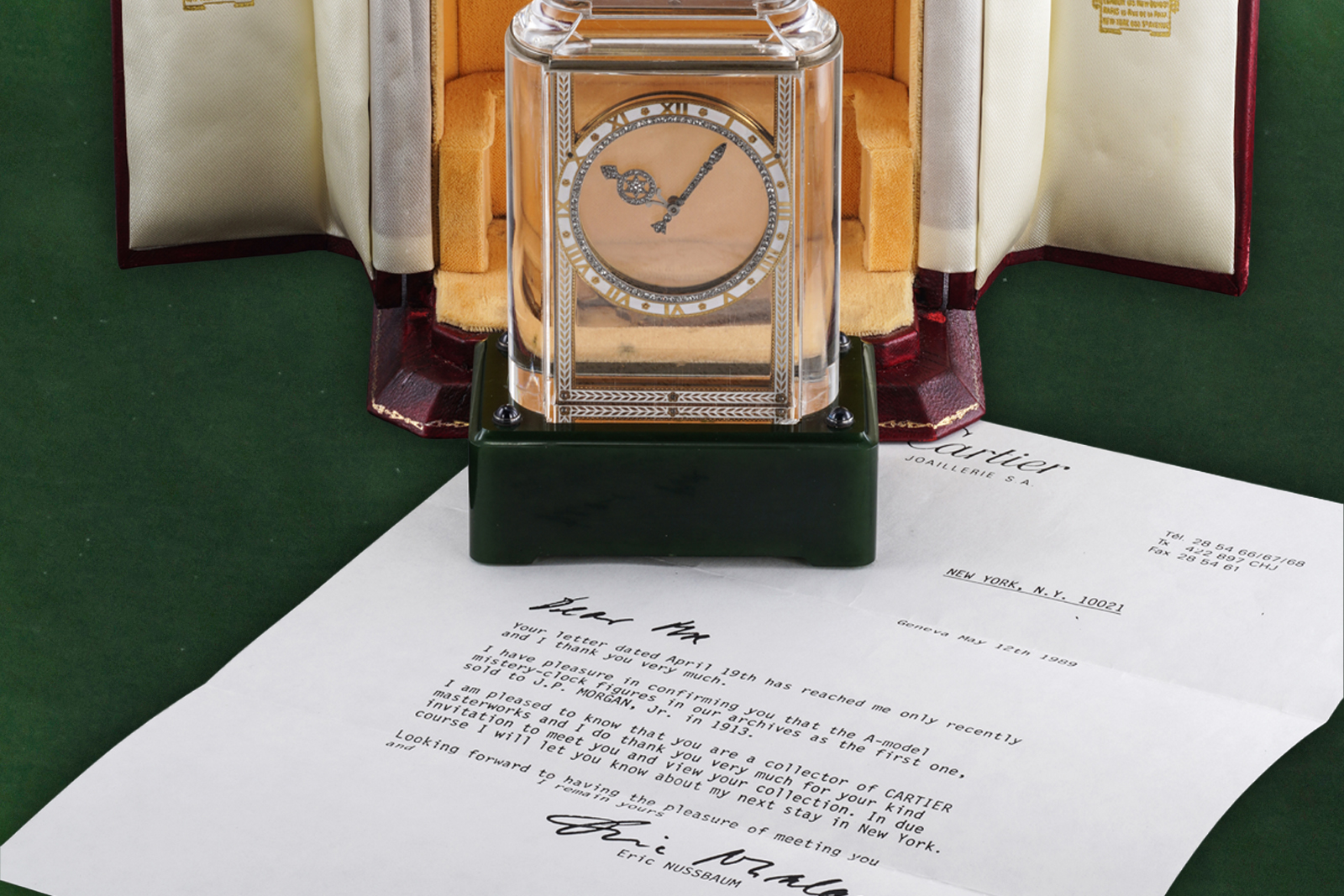
While its provenance is no mystery, its operation is. You can see straight through the clock, with the diamond set hands appearing to levitate within the rock crystal case.
Maurice Coüet, a young Parisian clockmaker scouted by Louis Cartier, accomplished the “mysterious” effect using two peripherally driven glass disks to carry the hands – a technique devised by Jean-Eugène Robert-Houdin, the father of modern performance magic.

While all Model A clocks are clad in rock crystal, they vary in terms of base and decoration. The bases can be found in various semi-precious stones while the rock crystal is decorated in a variety of enamel patterns and colours.
This Model A has a base of rich dark-green nephrite jade base. Inside is a key-wound and -set European Watch & Clock Co. calibre with eight days of going.

While Cartier only built 60 or so Model As, they come up for auction fairly regularly, with prices usually well above the half-million-dollar mark. But this is arguably the Model A to have, which makes estimate of CHF300,000-600,000 (US$377,000-754,000), relatively conservative.
Lot 135 – Charles Frodsham Split-Seconds Minute Repeating Tourbillon
Lot 135 is one of a series of highly complicated Charles Frodsham pocket watches, each nearly identical to the other, commissioned by the Morgan firm as gifts. The firm gifted these watches to partners and associates, and this watch, presented in 1922, continued that tradition.
This example was given to Elliot C. Bacon, the son of a Morgan firm partner, and himself the youngest partner at the firm, though he tragically died young aged just 36.
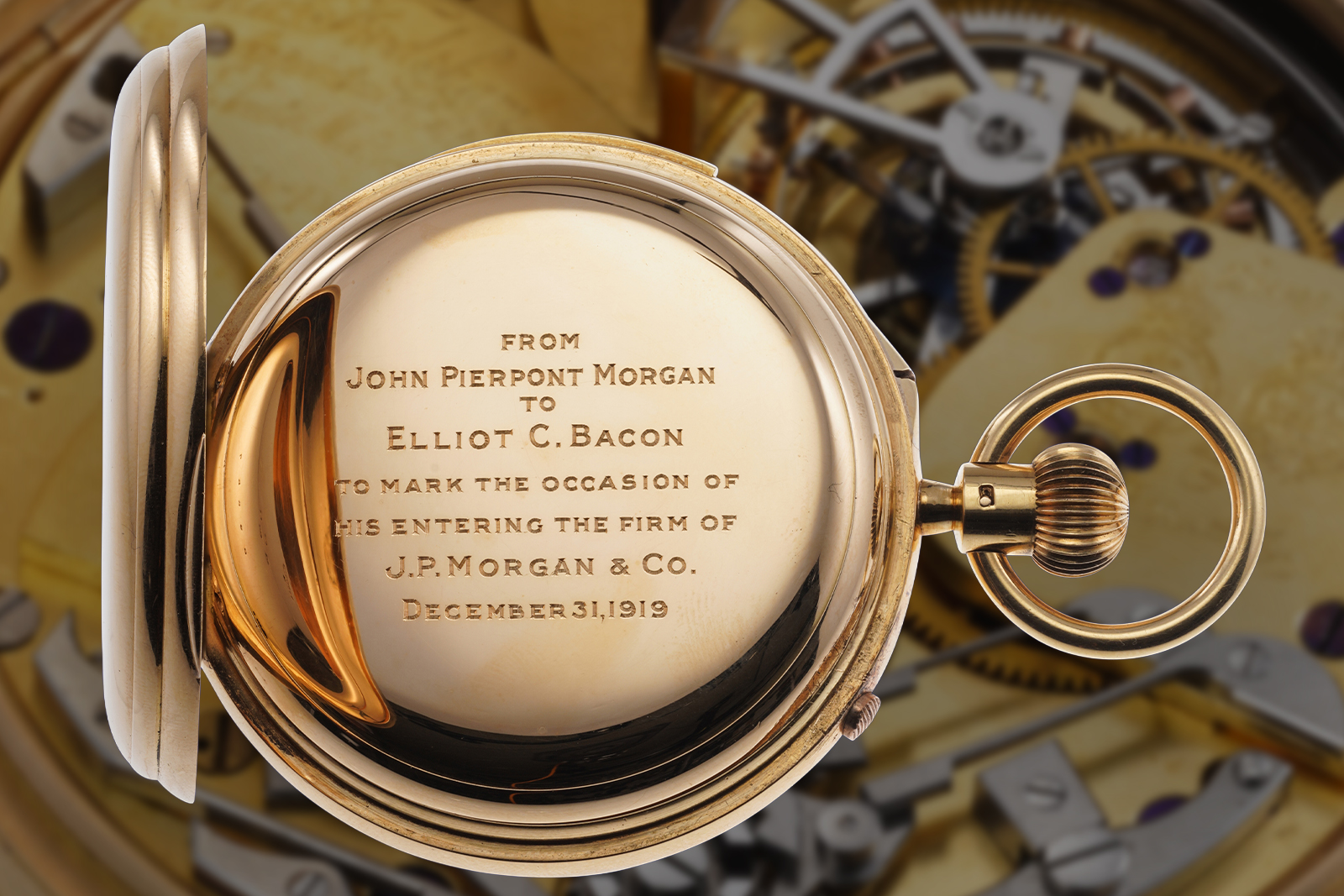
Like the rest of the series, the watch itself was built by Nicole, Nielsen & Co., utilising a Swiss ebauche that underpins many fine English watches – and at least one Breguet.
While the bones of the movement are Swiss, the calibre is faithfully executed in the English style with large, frosted gilt plates. One oscillating pinion chronograph directly connects the tourbillon cage to the chronograph seconds wheel, while another links the off-centre “centre” wheel to the 60-minute totaliser.
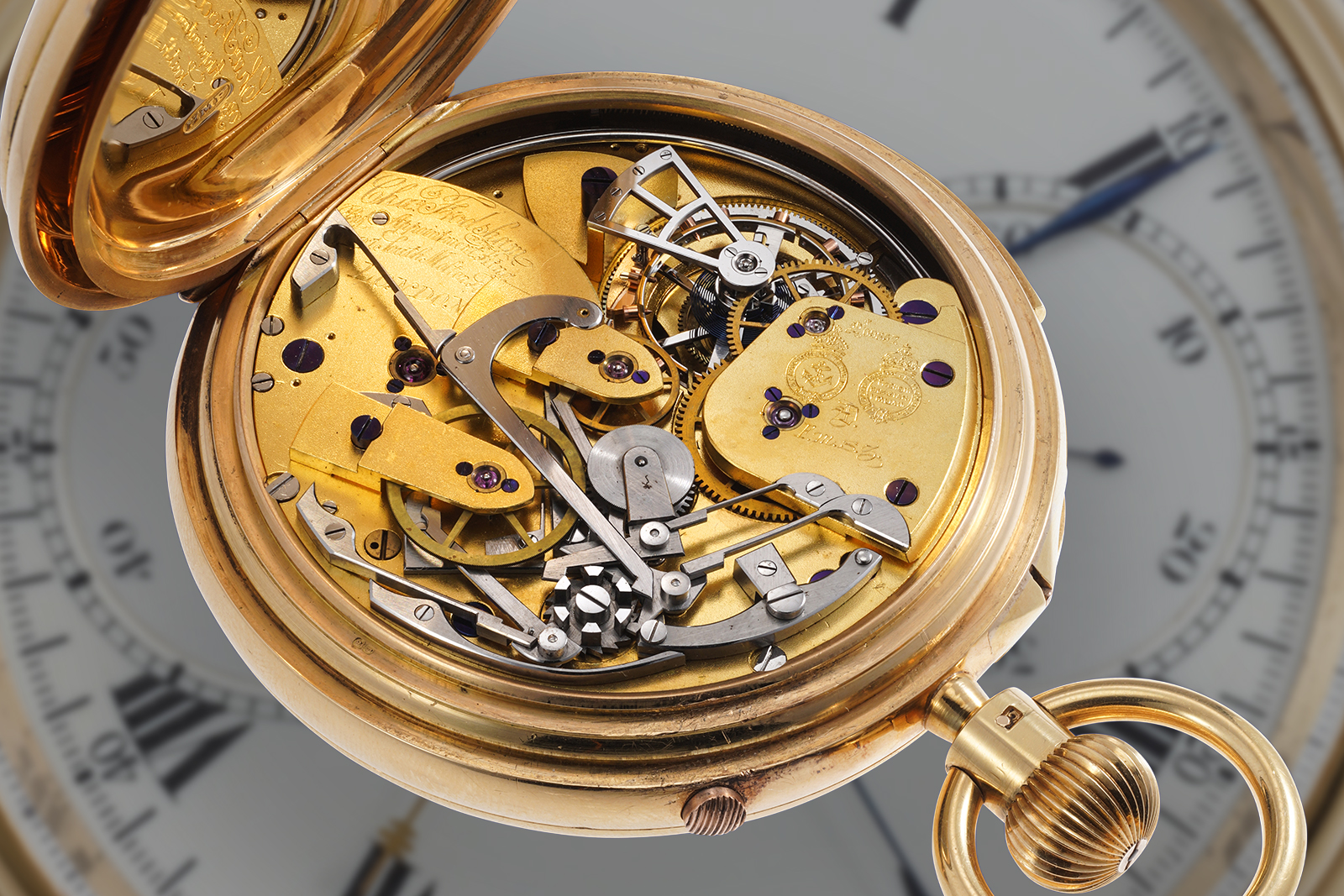
Operation of the chronograph and repeater are both typical. But, unlike most Swiss or American watches of the time (or today) it is pin-set, pushing the pin to the right of the crown pivots a rocker from the winding potion to hand setting.
The Morgan Frodsham carries an estimate of CHF70,000-140,000 (US$87,900-176,000).
The Jack Morgan timepieces will be sold in Phillips’ Watches: Decade One (2015–2025) auction on November 9, 2025 in Geneva.
For more, visit Phillips.com.
Back to top.



